Peacocks are a symbol of regrowth and respect, and many believe having them close by is a sign of luck and good fortune!
Interestingly, there are a couple of peacock species, and people keep them as pets.
So, can you keep just one peacock?
You can keep just one peacock. However, if you choose to keep a single peacock, it would be wise to give them some sort of a companion, whether it’s another peafowl, a chicken, or any other type of bird.
Looking after peacocks can be a bit difficult; however, you can manage it with the proper arrangements and attention to detail. Let’s explore a bit about peacocks and whether keeping just one peacock is a good idea.
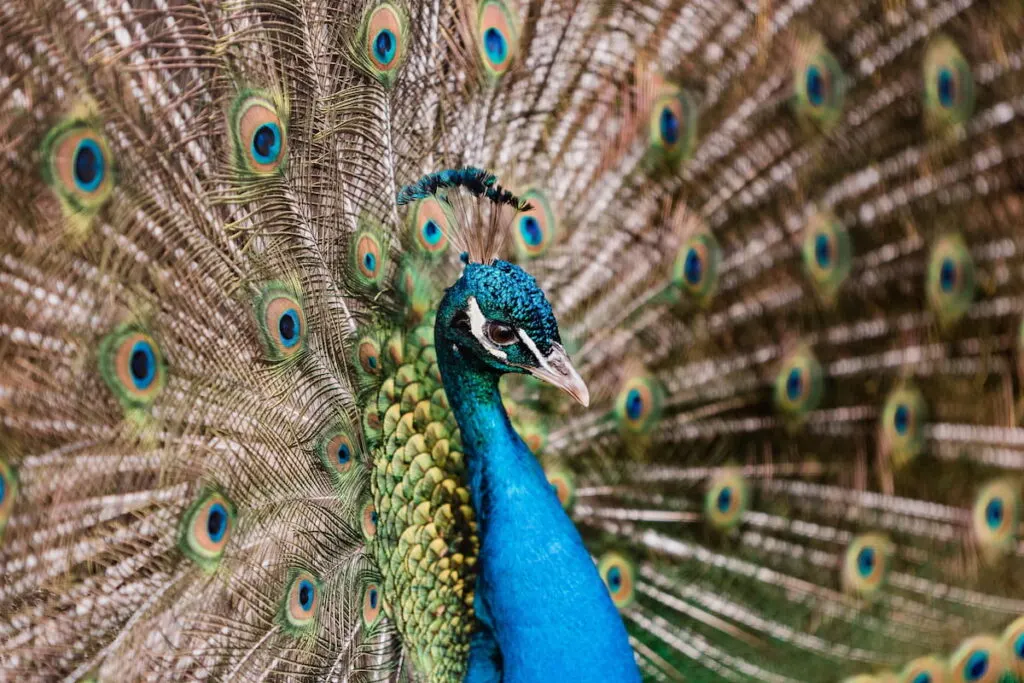
Table of Contents
Peacock or Peafowl?
When people talk about a group of peacocks, they call them peafowl. Males are called peacocks, and females are called peahens. The baby peacocks are called peachicks.
The names are similar to what people use for chickens, with the prefix “pea” out in front.
When a person is talking about peafowl, they typically use “peacocks” to cover all types of these birds.
Different Species of Peacock
Peacocks are beautiful creatures, and the most notable thing about them is their tail feathers!
We see many bright green and blue-spotted feathers when a peacock spreads its tail feathers. In addition, their necks are usually bright metallic blue, and they have little wisps of feathers on the top of their head.
It may seem like there couldn’t possibly be more than one type of peacock. Many people mistakenly think that if they’ve seen one peacock, they’ve seen them all.
However, there are three different species of peacocks, and they don’t look entirely the same. There are also a couple of variations within the species, such as a white or albino peacock!
There are slight differences within the species, but they can be easily noticed if you pay attention.
Indian Peafowl Characteristics
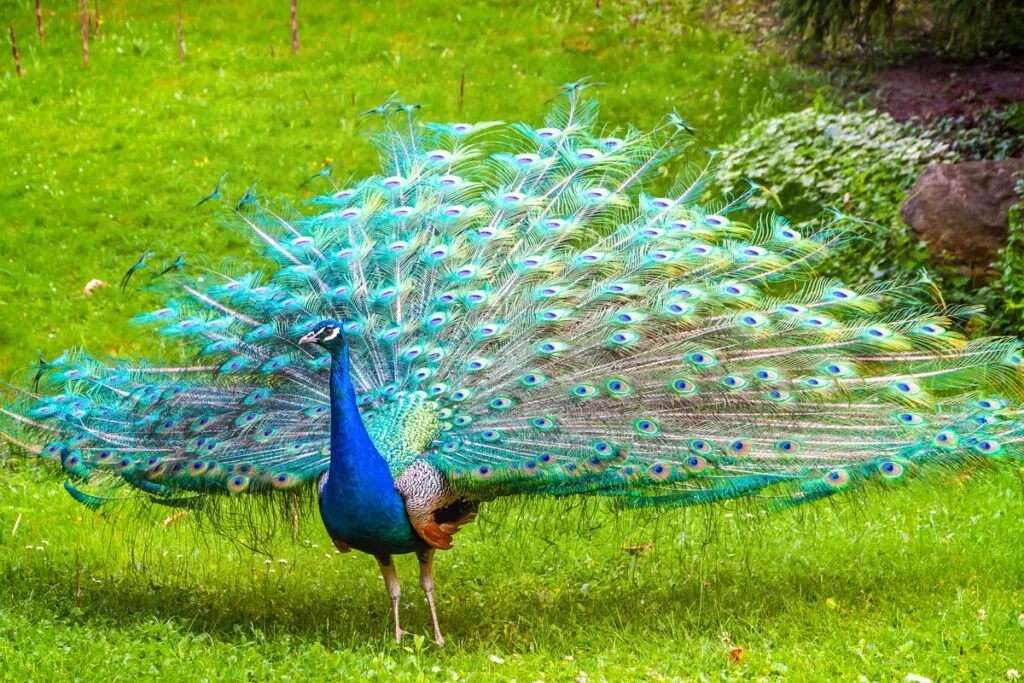
The Indian peafowl is the most popular species of peacock; they are the species people usually refer to when thinking of a peacock.
Indian peacocks have blue necks, and the base of their tail is lime green. The tail feathers on this species of peacock are very thick and spread out very wide.
The feathers near their eyes are white. It sort of looks like eyeliner, giving the birds a graceful look. They also have a little crest of feathers on the top of their head that are thin but have a bright blue tip.
Congo Peafowl Characteristics
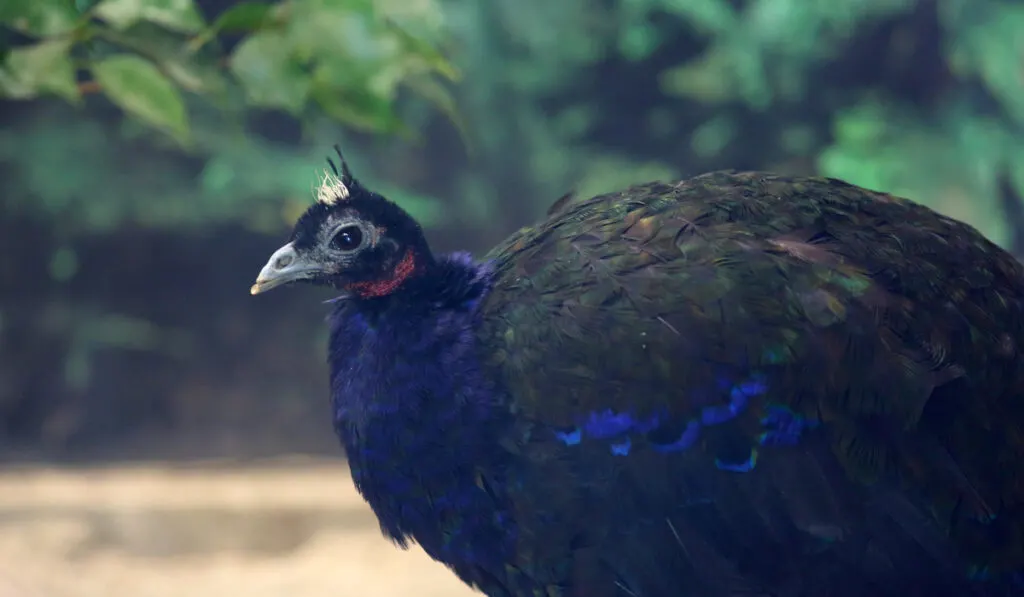
The Congo peafowl is a more timid version of the Indian peafowl we already mentioned. They typically are more reserved and have quieter temperaments than other birds.
Congo peafowl may not be ideal for people who want to get up close and personal with their pets.
Their necks are a darker shade of blue, much closer to indigo, and the base of their tail is dark green.
Congo peacocks don’t have the typical wide, spotted tail feathers. Instead, their tail feathers almost look like chicken feathers but are a bit thicker.
Their head is black, and they have a patch of short white feathers on top.
Green Peafowl Characteristics
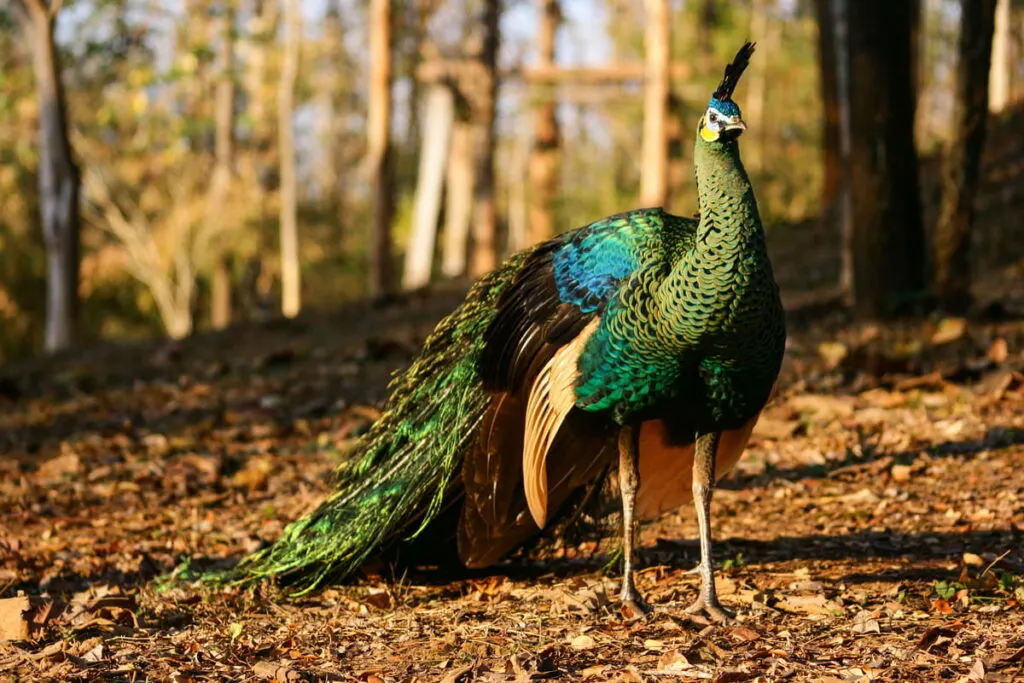
The Green peafowl is similar to the Indian peafowl, but its colors are a bit duller. Their necks are light green, and the base of their tail is a slightly brighter shade of green.
Green peacock’s tail feathers are also not as thick as other species of peafowl.
The feathers near their eyes are bright yellow and light blue. They also have a bushel of feathers on top of their head, making them quite desirable among pet owners.
Why Have a Pet Peacock?
You might be wondering why people would keep a peacock as a pet.
It can seem strange because a peacock is unlike a dog or farm animal.
Peafowl are not particularly interactive, and you usually need a special pen to keep them or need to have a lot of space where they can roam.
Most peacock owners love how the birds look, which is why they keep them. In recent years, peafowl have become more popular pets for people who want something different.
Some people want peacocks for the same reason they want to have a cat: these birds are great at eliminating rodents.
Peacocks love to eat snakes, insects, mice, rats, and other pests! However, they also love to eat flowers and produce, so that’s something to be wary of for all of you gardeners out there.
Taking Care of a Peacock
Before you buy or adopt a peacock as a pet, you have to ensure that you have the appropriate permits. Some places restrict ownership of peafowl, while others require permits to have them on your land.
Peacocks can make a lot of noise, so some communities prohibit the birds.
Here are some things to keep in mind for peacock owners.
Habitat
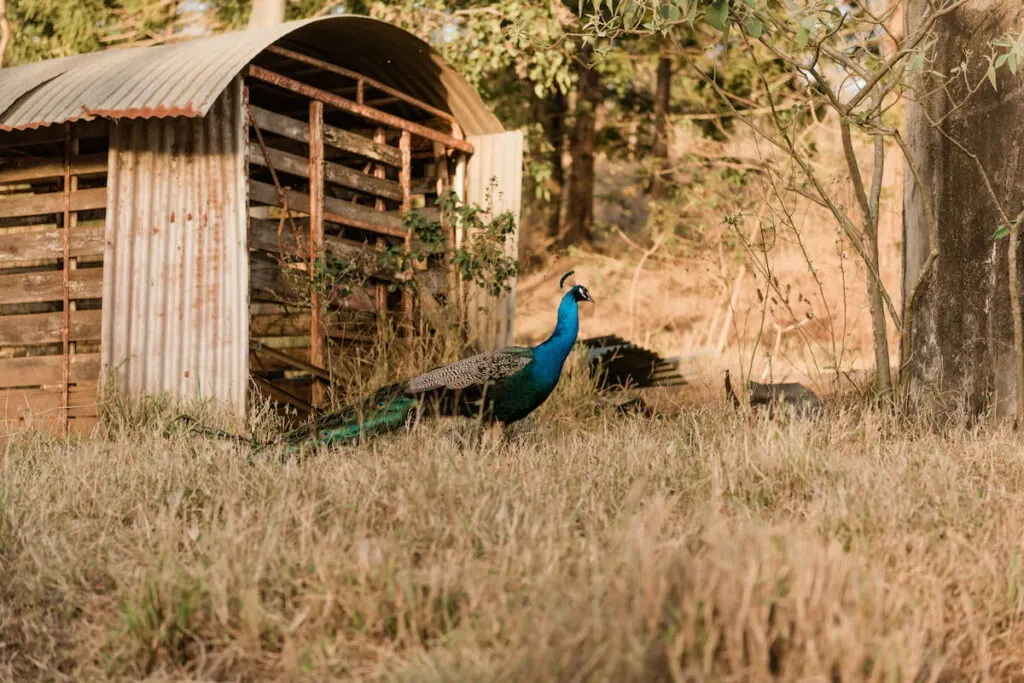
Typically, it is best to keep a peacock in an enclosure about 12 feet wide, 16 feet long, and 8 feet high. Remember, that’s per peacock, so if you have more birds, you’ll need to adjust the size of your pen.
The top of the enclosure must be closed because peacocks can fly! It is also essential to ensure that the peacock has a shelter to go to if it gets too cold for them to be outside.
Nutrition
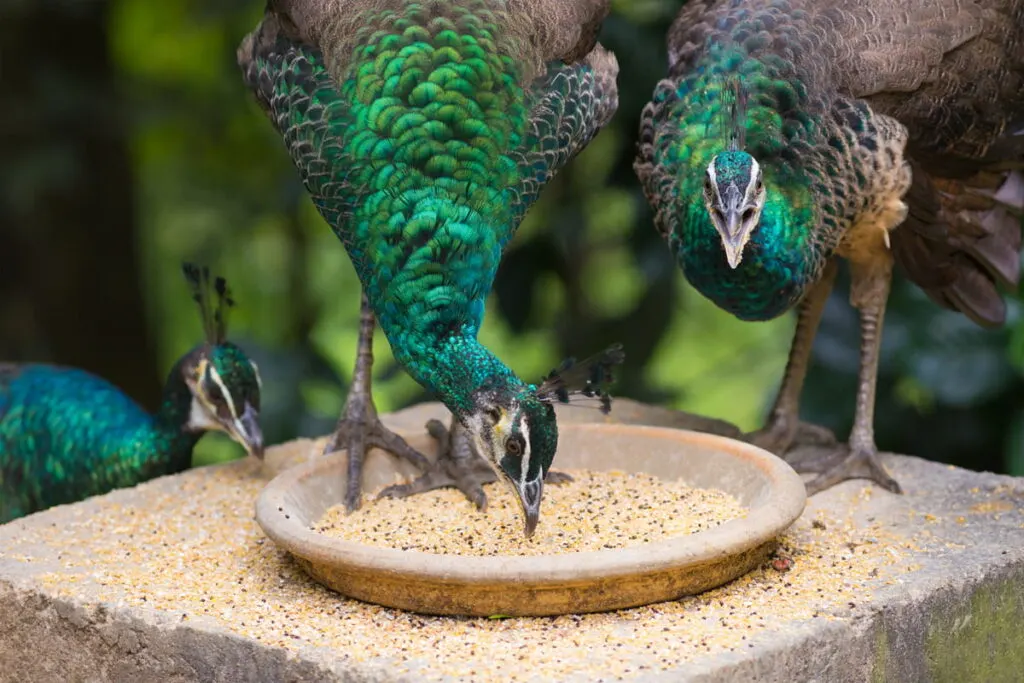
As mentioned before, peacocks love to eat snakes, rodents, flowers, produce, and insects.
However, you can also feed peafowl seeds or specific feeds. Peacock feeds typically include corn, wheat, and a handful of other grains.
Final Thoughts: Peacocks are Amazing Creatures
If you are considering getting a peacock for a pet, or if you have happened to find one in your backyard randomly and don’t know what to do with it, find a companion for it.
You might be able to identify which species of peacock it is and understand it a little bit better. Having a peacock as a pet might come with difficulties; however, it is manageable!
Be sure to obtain a permit for the beautiful bird and to create a habitat best suited for the peacock. Also, don’t be too upset when the bird decides to chew up your garden.
